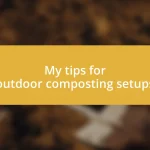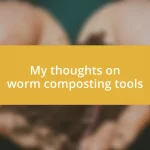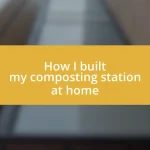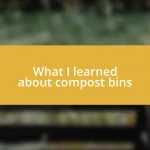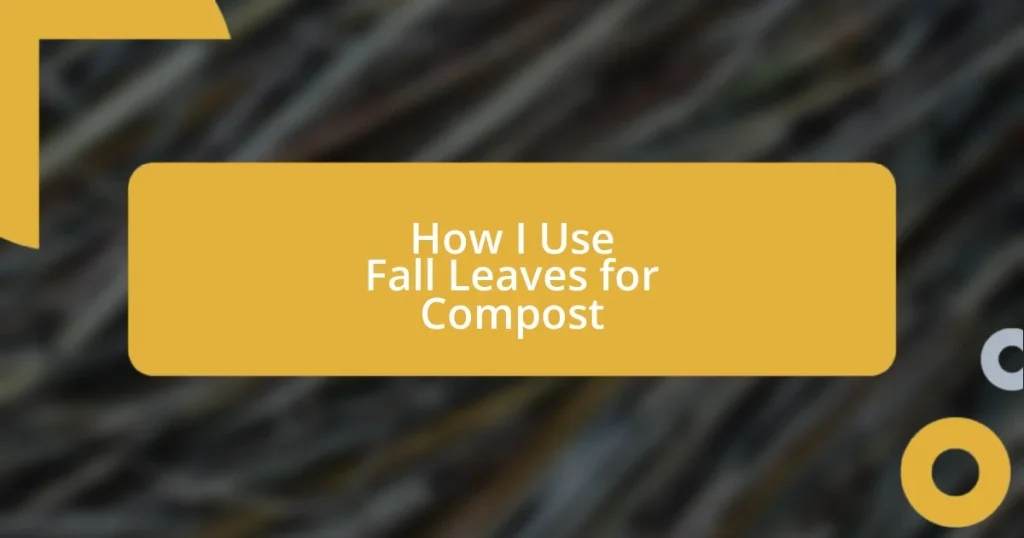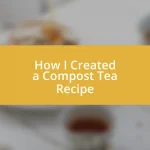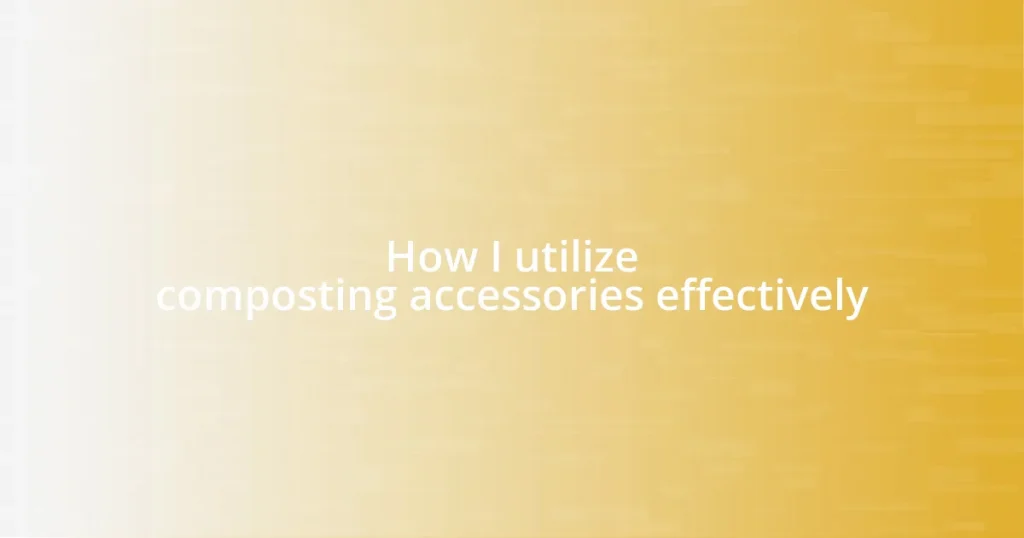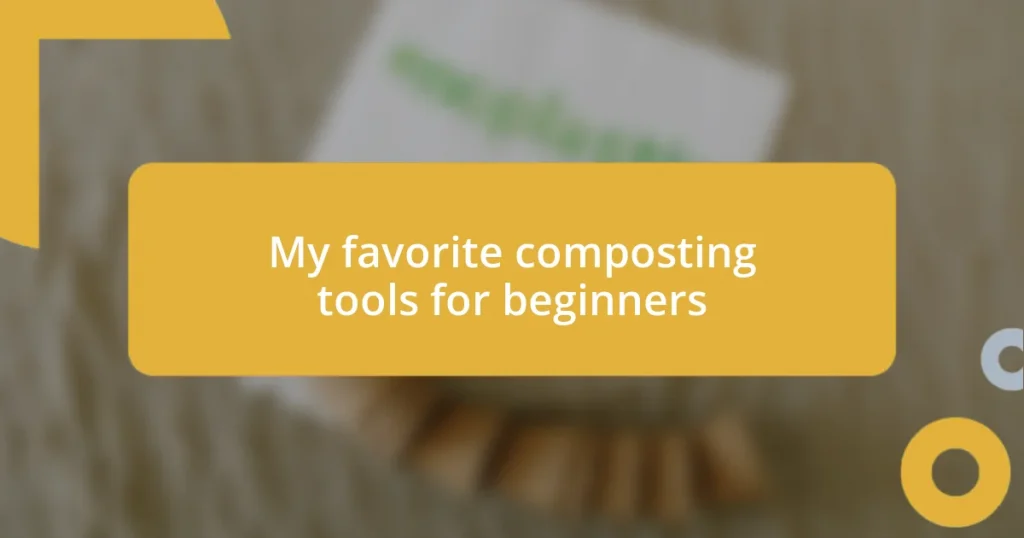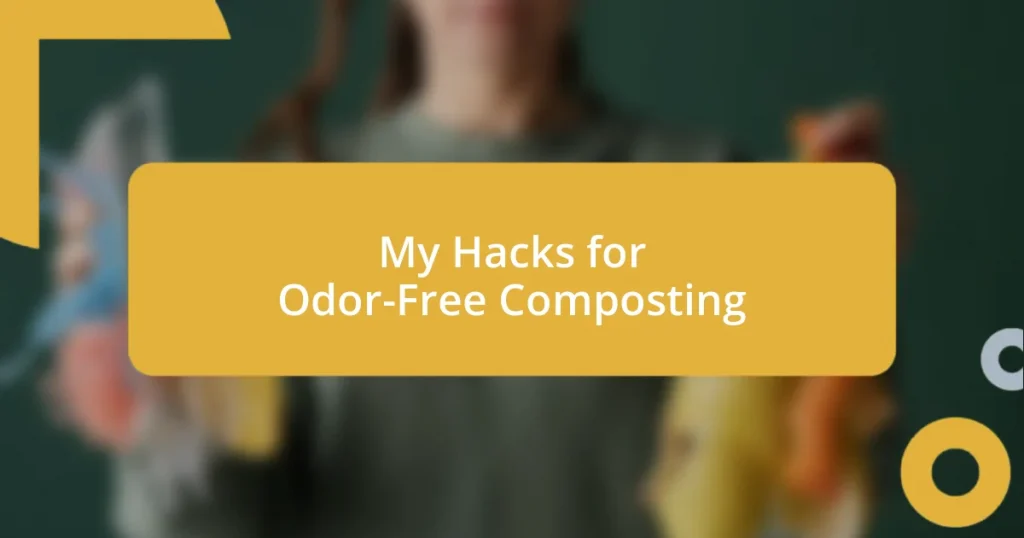Key takeaways:
- Fall leaves enrich compost by providing essential nutrients and improving soil structure, enhancing plant health and promoting beneficial microbes.
- Preparing leaves through shredding and layering with other organic materials optimizes decomposition and creates a balanced composting environment.
- Using finished compost in gardens boosts plant vitality, conserves moisture, and suppresses weeds, leading to a thriving garden ecosystem.

Why Use Fall Leaves
Fall leaves are often overlooked, but they are nature’s free gift, rich in nutrients that can nourish your compost. I remember the first time I raked leaves; instead of tossing them in the yard waste bin, I decided to throw them into my compost pile. The transformation was magical—I could see the leaves break down and eventually enrich my garden soil.
Using fall leaves also makes me feel connected to the changing seasons. Have you ever noticed how vibrant the colors are? It’s like each leaf carries a memory of summer, and turning them into compost feels like honoring their journey. Plus, it’s a sustainable choice that reduces yard waste and contributes to a healthier planet.
I’ve found that mixing leaves with kitchen scraps creates a wonderful blend in the compost. The carbon from the leaves balances the nitrogen from food waste, promoting healthy decomposition. It’s like a recipe where the leaves offer structure, allowing air to circulate and preventing the pile from becoming too compact. Each time I add leaves, I feel a sense of satisfaction knowing I’m giving back to my garden.

Benefits of Composting Leaves
Composting leaves is an excellent way to enrich your soil while simultaneously benefiting the environment. For me, there’s something special about seeing my old, crunchy leaves transform into dark, crumbly compost. It’s like watching a magic act unfold right in my backyard. This not only supports plant health but also encourages beneficial microorganisms and earthworms that make the soil thrive.
Here are some benefits of composting leaves:
– Nutrient Boost: Leaves are full of nutrients like potassium and phosphorus, essential for plant growth.
– Soil Structure Improvement: They enhance soil structure, promoting better aeration and drainage.
– Pest and Disease Resistance: Healthy compost can help plants resist pests and diseases more effectively.
– Environmental Impact: Composting reduces the volume of waste going to landfills, benefiting our planet.
– Cost-Effective: It saves money on fertilizers, as compost enriches the soil naturally.
Embracing this simple practice has not only opened my eyes to the beauty of natural cycles but has also become a fulfilling routine I cherish every fall. It’s a small act that yields great rewards, giving me a sense of purpose and connection to the earth.

Preparing Leaves for Composting
Preparing leaves for composting involves a few straightforward steps that can enhance the process significantly. When I first dived into this, I learned that shredding the leaves really boosts the composting process. It’s fascinating how I can turn that crunchy pile of leaves into tiny bits that break down faster. Just running a lawn mower over them or using a leaf shredder does wonders. Have you ever tried this? The texture changes from hard and bulky to fluffy and almost like confetti!
After shredding, it’s essential to mix the leaves with other compost materials. I like to layer them with kitchen scraps or grass clippings. This layered approach not only adds diversity but also creates a balanced composting environment—promoting airflow and moisture. There’s something incredibly satisfying about seeing my compost pile thrive. It’s like creating a living ecosystem right in my backyard.
Don’t forget to keep an eye on moisture levels when you’re preparing your leaves. Dry leaves can absorb too much water. I always check to ensure there’s enough moisture in the pile without it becoming soggy. Recognition of this balance makes all the difference for healthy decomposition and, ultimately, beautiful compost.
| Step | Description |
|---|---|
| Shredding Leaves | Breaks down leaves for faster composting; use a mower or shredder. |
| Layering Materials | Mix shredded leaves with kitchen scraps or grass clippings for airflow. |
| Monitoring Moisture | Ensure the compost is moist but not soggy for optimal breakdown. |

Combining Leaves with Other Materials
Combining leaves with other compost materials goes beyond mere mixing; it’s about creating a rich tapestry of organic matter. When I first started composting, I was skeptical about how various materials would interact. It surprised me to find that blending leaves with vegetable scraps, coffee grounds, and even eggshells created a delightful medley that accelerated decomposition. Have you experienced that first whiff of a healthy compost? There’s nothing quite like it!
I often think back to my first few attempts when I overfilled my pile with just leaves. The resulting compost was lackluster and took ages to break down. By layering those leaves with nitrogen-rich materials like grass clippings or fruit peels, I’ve noticed not just an improvement in speed but also in overall quality. Mixing in those vibrant green materials truly energizes the process, and you can see the microorganisms buzzing to life!
Another aspect that enhances the blend is adding cardboard or shredded paper to the mix. Initially, I hesitated to toss them in, thinking they might create a mess. However, they serve as fantastic carbon sources. Plus, they help aerate the pile, keeping it light and fluffy. I still smile every time I see the transformation from a chaotic pile into a rich compost hybrid. It’s like watching a community come together—each component playing its role in creating something beautiful and useful. Have you found your own favorite combinations? Don’t be afraid to experiment and see what works best for your composting journey!

Maintaining Your Compost Pile
Maintaining your compost pile is an ongoing adventure that keeps me engaged with the process. I often think of my compost as a living entity; it needs attention just like anything else that grows. Turning the pile regularly is crucial for aeration. I remember the first time I saw the steam rising as I turned it over—I felt like a proud gardener witnessing a mini-ecosystem come to life. Have you noticed how much more vibrant your compost becomes with each turn?
Temperature is another key player in the maintenance game. I’ve invested in a simple compost thermometer, and I can’t tell you how rewarding it is to monitor the internal heat. When the pile reaches that sweet spot of 130-160°F, it’s as if my compost is joyfully working overtime. I find myself checking it daily, amazed at how diligently those microorganisms are breaking things down. It’s a little like nurturing a pet; you want to ensure it’s healthy and thriving!
Lastly, I’ve learned that patience pays off. Sometimes, I catch myself impatient, wanting to rush the process to get that rich compost sooner. However, I’ve realized that a little waiting can lead to a much higher quality of compost. During those quieter moments, when I just observe the composting process unfold, I’m often reminded that good things take time. Have you ever felt that way with your own gardening projects? Taking the time to maintain your compost not only enriches the soil but deepens your connection to nature.

Using Finished Compost in Gardens
Using finished compost in gardens can truly transform your plants’ health and vitality. I remember the first time I spread my homemade compost around my garden—I was anxious, hoping I hadn’t overdone it. But as the weeks rolled by, I began to notice lush growth and vibrant colors that I hadn’t seen before. Have you had similar experiences where you were nervous about using compost, only to be pleasantly surprised?
There’s a magical feeling when plants respond positively to the nutrients you’ve painstakingly created. As I incorporated compost into my flower beds, I felt a sense of pride watching my blooms flourish. The richness of the compost not only feeds the plants but revitalizes the soil, promoting a thriving ecosystem below the surface. Isn’t it rewarding to see that direct impact of your hard work? It’s like giving your garden a nourishing hug!
Additionally, I often use compost as a mulch layer, especially in the summer months. I’ve found that it conserves moisture and suppresses weeds while slowly feeding the plants. The first time I tried this, I was amazed at how much less I needed to water my garden. It felt like a win-win situation! Have you considered using compost in this way? It’s a simple tactic that has made a significant difference in my gardening routine.



